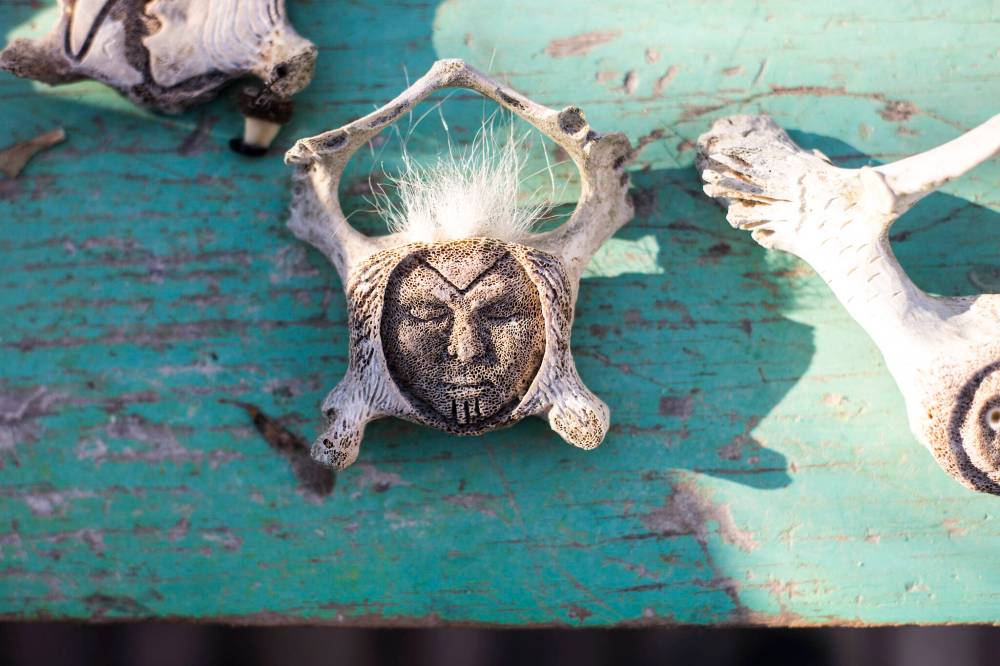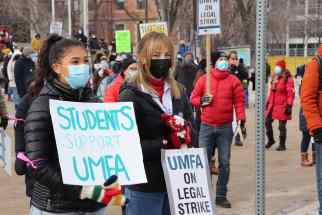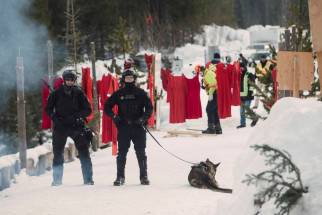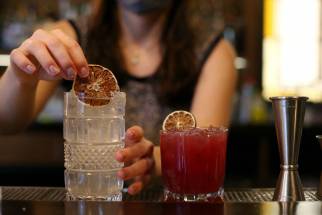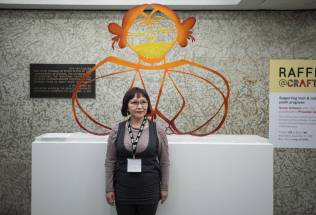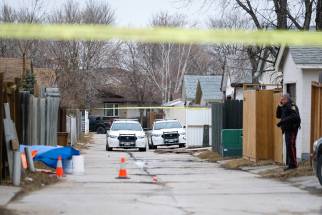Art in the blood Inuit sculptor honours creative mother in massive piece outside WAG’s Qaumajuq , a few steps from works by her famous father and other relatives inside gallery
Read this article for free:
or
Already have an account? Log in here »
To continue reading, please subscribe:
Monthly Digital Subscription
$0 for the first 4 weeks*
- Enjoy unlimited reading on winnipegfreepress.com
- Read the E-Edition, our digital replica newspaper
- Access News Break, our award-winning app
- Play interactive puzzles
*No charge for 4 weeks then price increases to the regular rate of $19.00 plus GST every four weeks. Offer available to new and qualified returning subscribers only. Cancel any time.
Monthly Digital Subscription
$4.75/week*
- Enjoy unlimited reading on winnipegfreepress.com
- Read the E-Edition, our digital replica newspaper
- Access News Break, our award-winning app
- Play interactive puzzles
*Billed as $19 plus GST every four weeks. Cancel any time.
To continue reading, please subscribe:
Add Free Press access to your Brandon Sun subscription for only an additional
$1 for the first 4 weeks*
*Your next subscription payment will increase by $1.00 and you will be charged $16.99 plus GST for four weeks. After four weeks, your payment will increase to $23.99 plus GST every four weeks.
Read unlimited articles for free today:
or
Already have an account? Log in here »
Hey there, time traveller!
This article was published 03/12/2021 (1470 days ago), so information in it may no longer be current.
ELIE — Goota Ashoona prefers to work outside.
That’s where she first learned to make her art as a child growing up in an Inuit outpost camp on the shores of Baffin Island, Nunavut, transforming snow into miniature igloos and polar bears under a sky that danced at night.
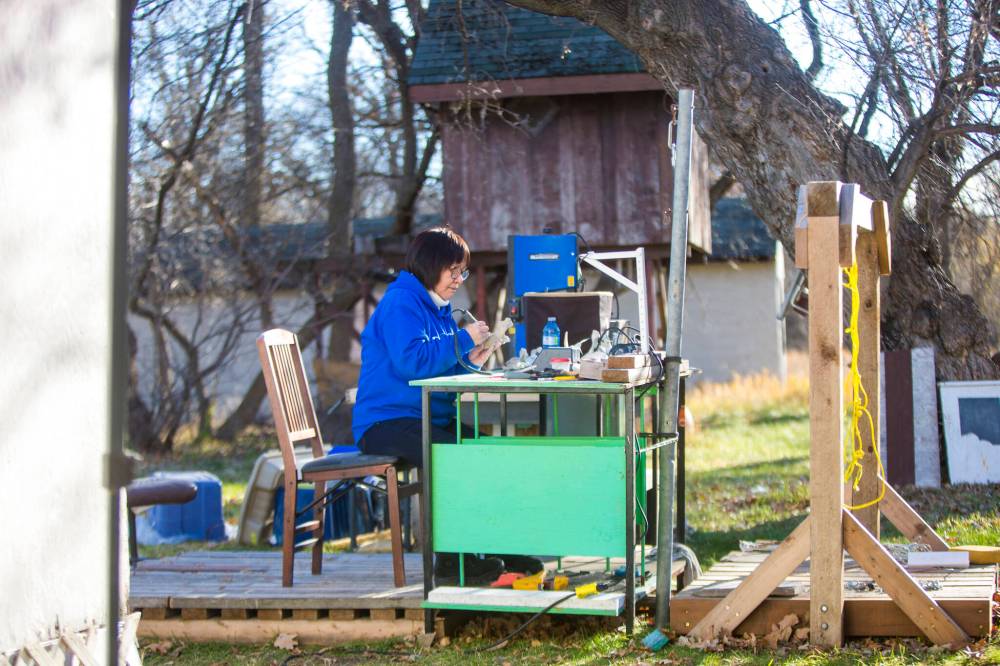
Today, Ashoona is seated at her outdoor workbench at her home much further south near Elie, her tiny 4-foot-11 frame bundled into a bright-blue hoodie emblazoned with the word “Nunavut” against the red inuksuk and the blue star (the Niqirtsuituq, or North Star) from the territorial flag. She’s surrounded by trees and, beyond them, open prairie.
It’s early afternoon in the small community about 45 kilometres west of Winnipeg, but already, the November sunlight is long and low. Ashoona is carving faces, among her favourite things to carve, into beluga whalebone. It’s silent out here, save for the whine of her rotary tool.
Ashoona’s own face is completely relaxed. She’s in the zone. She stops working, blows the dust from the bone, and examines the face that now grins impishly up at her. “I like it best when it’s smiling,” she says.
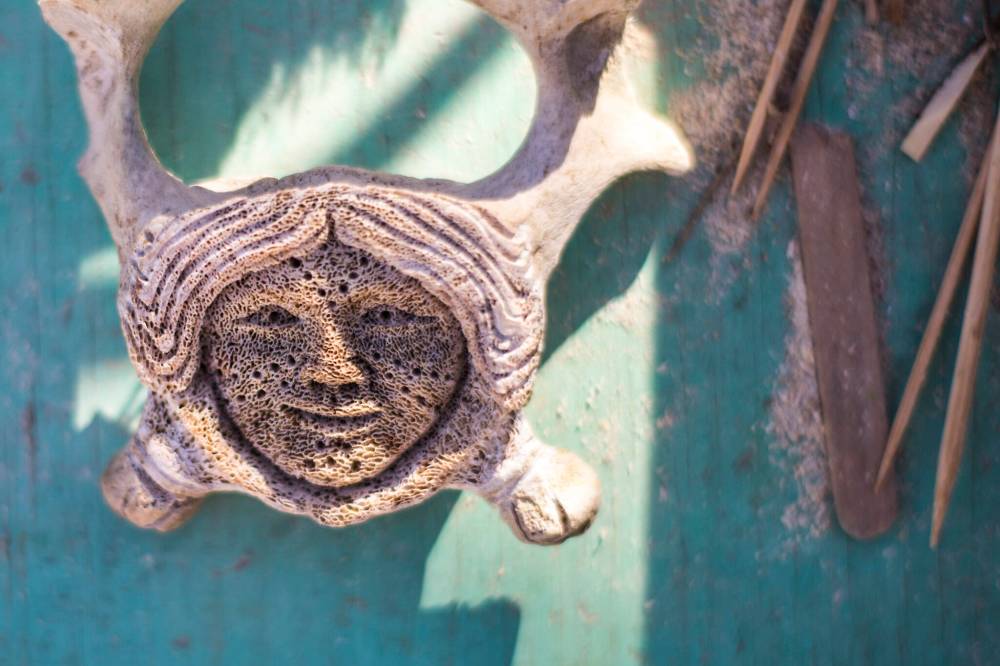
Ashoona, 53, is a third-generation Inuit artist. Art is in her blood.
Her father was renowned sculptor Kiugak (Kiawak) Ashoona, who was a member of the Order of Canada and founding figure in the Kinngait (Cape Dorset) art movement, and her paternal grandmother was acclaimed and hugely prolific printmaker Pitseolak Ashoona.
Artists can be found throughout her family tree: Goota’s mother, Sorosilutu Ashoona, was also a printmaker; Goota’s older sister, Shuvinai Ashoona, is a celebrated graphic artist who draws contemporary works in pencil and ink. Her cousin was Annie Pootoogook who, in 2006, became the first Inuk recipient of the Sobey Art Award.
Goota is a carver, mostly, working with stone and whalebone. She loves to create sculptures of women and children. Mermaids, too. 
Ashoona and her husband, Bob Kussy (who is among his wife’s biggest champions and cheerleaders) moved their Ashoona Studios from Yellowknife, where they lived for decades, to Manitoba, where Kussy is from, in 2017. Ashoona’s adult twin sons, Sam and Joe, also live in Manitoba. She’s encouraging their art-making, too, sometimes engaging Sam in friendly sketching competitions. (He’s faster, she confides.)
When she’s carving, time seems to stop. Her worries are silenced. “The only thing that keeps me occupied is when I’m making art, when I’m working,” she says. Her eyes sparkle just talking about it.
“It makes me really excited when I’m creating something that I was just imagining,” she says. She doesn’t like being told what to make; it has to come from within her. “For example, that big carving? That comes from me.”
That big carving she’s referring to is Tuniigusiia/The Gift, an arresting sculpture carved from Verde Guatemala marble — its colour a homage to the green serpentinite her father liked to carve — that now welcomes visitors to Qaumajuq at the Winnipeg Art Gallery. Commissioned by the Manitoba Teachers’ Society and standing at more than two metres tall at the corner of St. Mary Avenue and Memorial Boulevard, the sculpture is about education and knowledge transfer through storytelling.
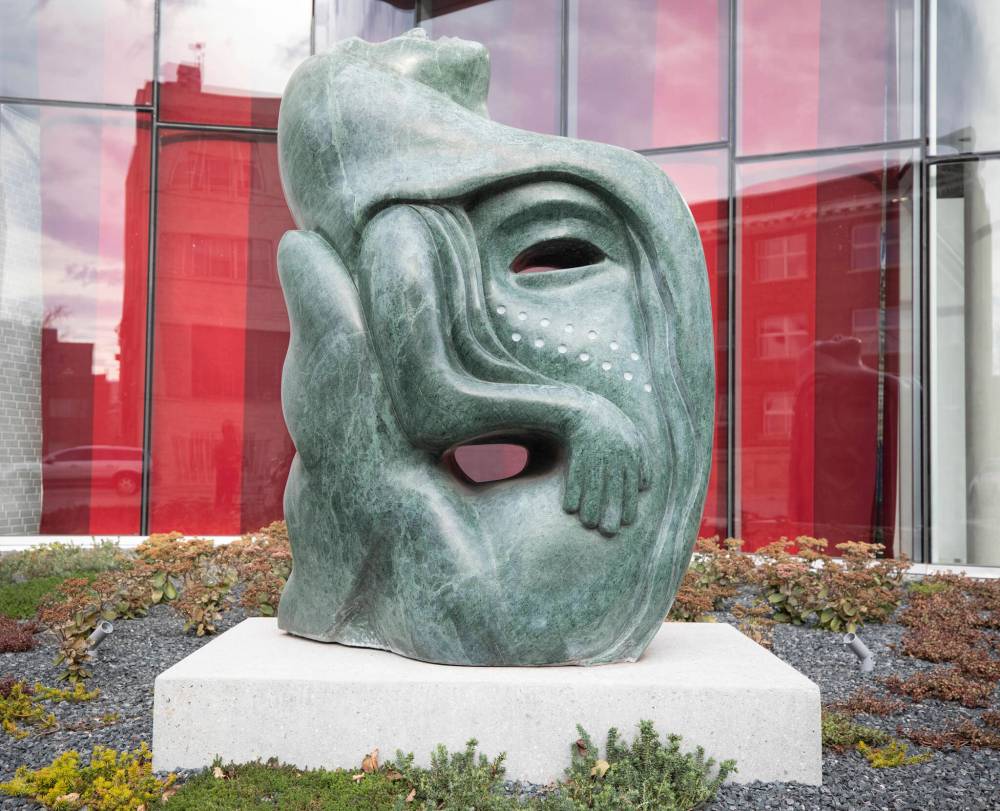
Among the stories told in Tuniigusiia/The Gift is that of Sedna, the goddess of the sea and the mother of all marine animals. She’s often depicted as a mermaid. There are several versions of Sedna’s creation story, but in many of them, her fingers are cut off by her disapproving father as she clings to his kayak, desperate to live. As she sinks to the bottom of the sea, she is transformed into a powerful sea goddess and her fingers become sea animals. The sea animals become tangled up in Sedna’s tumbling black hair, which can only be combed by an angakkuq (or shaman). Comforted, Sedna then releases the sea animals so the Inuit people can hunt and feed their families.
It’s a story that was passed down to Ashoona by her mother and grandmother.
“There’s the mermaid’s — Sedna’s — story, and there’s a mask of two ladies: the grandmother is teaching the girl how to throat sing,” explains Ashoona, who is also a throat singer. “And there’s another mask of my grandmother’s drawing that has a tattoo. I have carved those in the past a lot of times too, but I put them together into that stone.”
The face that opens skyward is a significant one.
“I was going to put just a regular face on top but this picture of my mom just kept coming back. So my mom is there.” Ashoona says with a smile. “She’s free.”
“I was going to put just a regular face on top but this picture of my mom just kept coming back. So my mom is there… She’s free.” – Goota Ashoona
A sculpture of that size is the product of traditional carving techniques and modern technology; she used a computer-aided design cutter, which Ashoona says was a dream come true. “I never thought it would happen.”
In 1980, her father’s own Sedna sculpture was featured on a Canadian postage stamp. Ashoona shows me a photo of Kiugak’s stamp, and then gives it a quick peck. Whenever her father finished a carving, she explains, he’d give it a kiss.
● ● ●
Goota Ashoona was born in Kinngait, formerly Cape Dorset, home of the Kinngait Co-operative, also known as the West Baffin Eskimo Cooperative (established in 1959), and widely considered to be the capital of Inuit art.
Goota is somewhere in the middle of 11 kids; some of her siblings were adopted by her parents. When she was 11, her family moved to the outpost camp.
“I ended up working with my parents in the camp when we moved there, and that’s how I learned to work more — like, there was no running water, not even water much because we ended up living in the point of the bay.
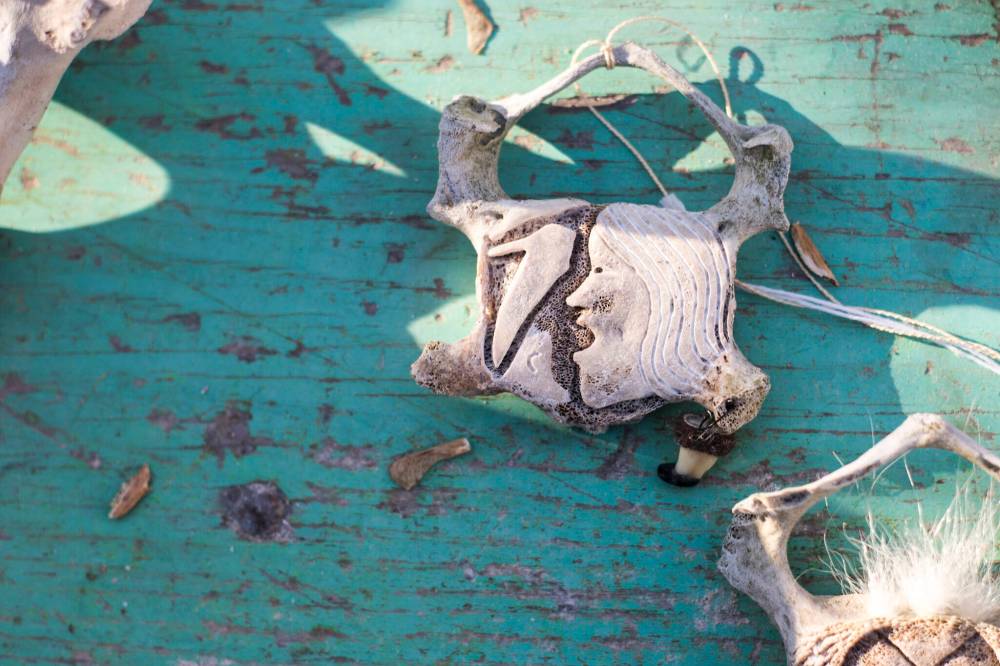
“We ate mostly country food,” she continues, using a term to describe traditional food that is hunted, fished and foraged. “That’s where I learned to eat it. And from the land, little flowers or blueberries in summertime. Store-bought only at least every three months, because it was four hours away in Cape Dorset.”
It wasn’t an easy life. “I came to starvation one time — I ended up eating fox because we didn’t have any food,” Ashoona says, making a face and sound that suggests that fox is something one only eats if one is starving. “It’s horrible. It almost killed me. It made me understand how my grandmother lived.” (Pitseolak was left a young single mother after her husband died.)
The camp is also where Goota first learned to carve from Kiugak. She began by filing and sanding her father’s carvings for him. “He kept bringing it to me — only me. My older sisters didn’t listen,” she says. “They were all over the place and just wanted to leave me alone there, too.” Goota’s older sisters would make up stories to keep her home. “’There’s going to be a ghost if you come with me,’” she says, mimicking the grave voice of a fibbing teenager.
Ashoona remembers doing some art in school. “It was only Inuktitut,” she says. “Inuktitut syllabics, Inuktitut ABCs and learning how to do 123s, those kind of numbers, and colouring, sketching. Sometimes, we go to the gym or go learn how to make cookies, or go to the library to have quiet time.”
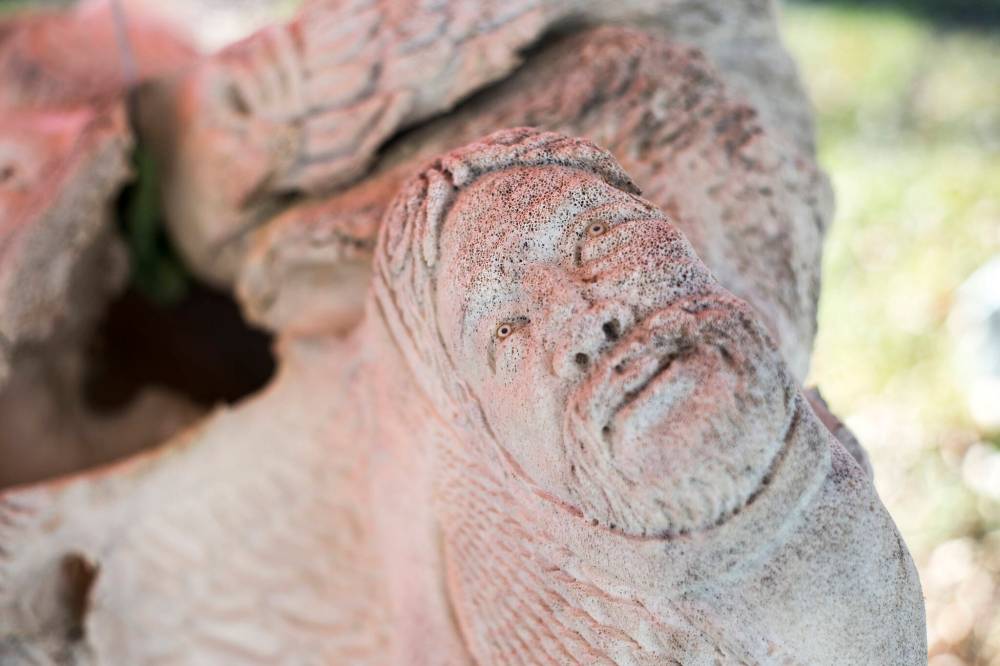
One day, the librarian noticed young Goota admiring some large blue-and-white prints that suspended from the ceiling. “And she said, ‘those are your mom’s,’” Ashoona says. “I’m like, ‘Wow, my mom’s artwork is in the library.’ I was just a little girl. I know what my mom does at home, but I didn’t expect to see those there. It just took my heart.”
Ashoona didn’t really care about looking at the books after that. “I just wanted to look at those (prints).”
Still, she’s not convinced she knew she wanted to become an artist as a child.
“Why I started, why I wanted to become an artist? Did I? Hmm, I don’t know,” she says. “But I played with my father’s carvings. I sketched. I helped my mom when she was drawing and colouring sometimes. And I followed my grandmother and my mom when they were going to the co-op to sell their artwork, and I followed my father when he went to sell his carvings. And I was mostly the only one who went with them. And I was wondering why, why, why, later on, why me?”
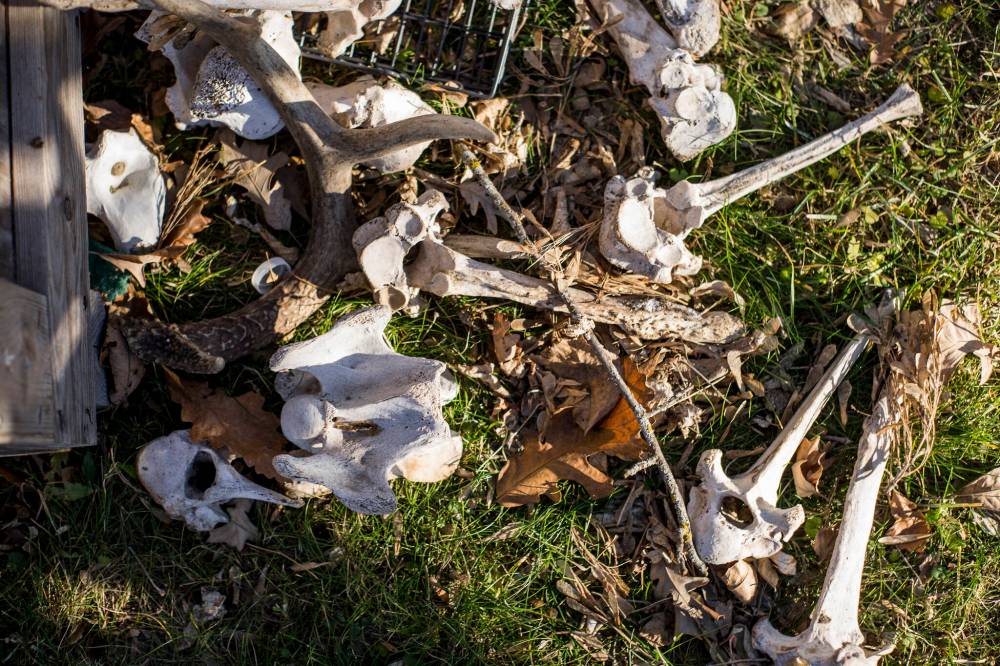
“Maybe they saw what was coming,” Kussy suggests. “Sometimes parents see that in their children.”
Her husband certainly recognized her talent when he first saw it decades ago. Ashoona, meanwhile, is an intensely private person. She wasn’t so sure she wanted to share her gift with the world.
“I didn’t want to become an artist because I was afraid of what would happen,” she says. “For example, kind of here being seen that I can do artwork, I can create something with my little hands, that I can create something that I’m imagining. And I didn’t want that to be seen, but he brought it out,” she says, gesturing to her husband.
“He brought me out of the box. Now he flies away and tells everybody,” she adds, laughing.
• • •
Goota Ashoona and Bob Kussy met in Yellowknife in the 1990s. Kussy had been working in an art program in the prison, and was asked to come work at a new solvent-abuse program for youth. Kussy noticed that most of the kids they were serving were Inuit and didn’t speak English. They would need a translator.
“There was nobody who wanted to go there to translate,” Ashoona says. The job was offered to Ashoona and two other women from her community; it was Ashoona who ultimately decided to go.
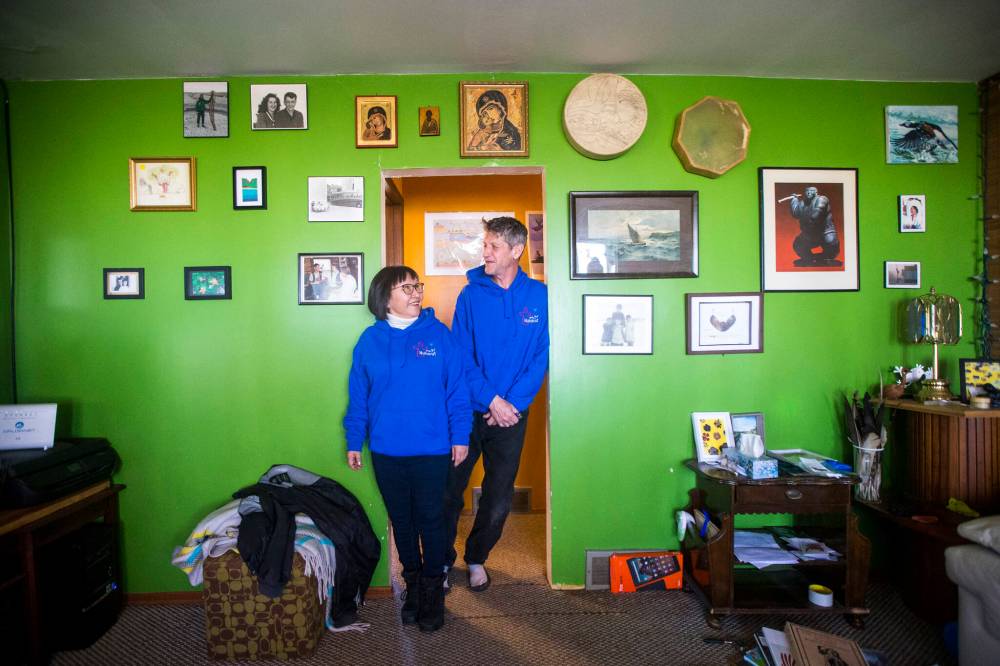
Kussy still remembers seeing her for the first time. “She comes off the plane and she’s got a beautiful silver fur hat on,” he says. “So she shows up by accident, we start talking, and then later on I asked her to marry me.”
Kussy didn’t know Ashoona could carve until she made a sculpture of an Inuit hunter with a bow and arrow, a thank you gift for her English tutor. Kussy was blown away. “She was better than 90 per cent of the guys who were putting stuff to market.”
Together, they founded Ashoona Studios. It was, as it is today, a landing pad for many visiting artists. It’s also where Ashoona started carving more seriously, and more publicly. She began perfecting her faces which, to her, are a carving’s most important feature. “It’s big because… how to put it in English,” she reflects for a moment. “It’s like, it’s alive. You have to bring it to life. That’s what it is.”
The shape of the bone or stone can inform the carving, but not always. Sometimes, carving is about catharsis. 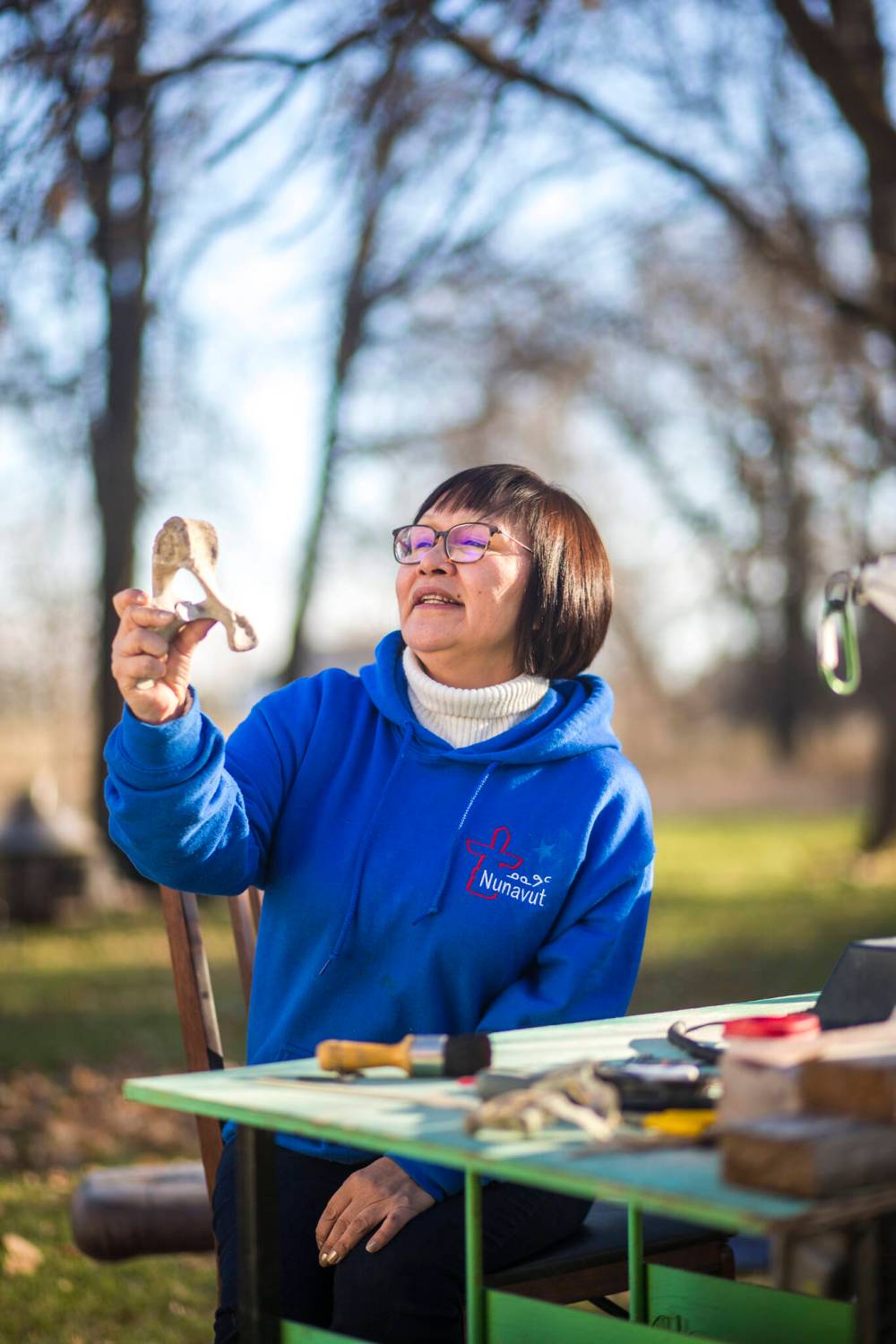
“Sometimes this has to come out of myself, too — if I’ve been kind of not happy about something, or it feels like I have to bring it out, or let it go,” she says. “For example, my mom’s face. I had to put it into that big stone to let her go, and she’s free.”
Ashoona recalls one of her earliest Yellowknife carvings, an angel carrying a baby to heaven. That work, too, was created out of a desire to set someone free.
“I started with my little sister, who had passed away when I was a little girl. It was really stuck in my heart and was grabbing me most of the time. That’s when I started carving in Yellowknife. I had to bring her out of my chest and let her go, too,” she says.
“My mom told me she passed away in the morning, and where did she go? I’m trying to play with her. And my mom said, in Inuktitut, she was taken by an angel. What do angels look like? She said they had wings. I ran around the tent to look for an angel with wings, and there was nothing, only a bird. I was pissed off. I hated angels until I let that go.”
And now?
“I love angels.”
• • •
It’s a Friday morning in Winnipeg, and Qaumajuq is humming with activity. It’s the weekend of Crafted, the Winnipeg Art Gallery’s big annual show and sale. Hundreds of artists are selling works on every floor.
Ashoona and Kussy are there, along with their friend, Inuit artist Kailey Sheppard. Ashoona and Kussy have been burning the midnight oil in the weeks leading up to the sale, making their popular whalebone Christmas ornaments. Their table is right in front of the three-storey glass vault that anchors Qaumajuq, and holds thousands of Inuit sculptures — including Ashoona’s father’s.
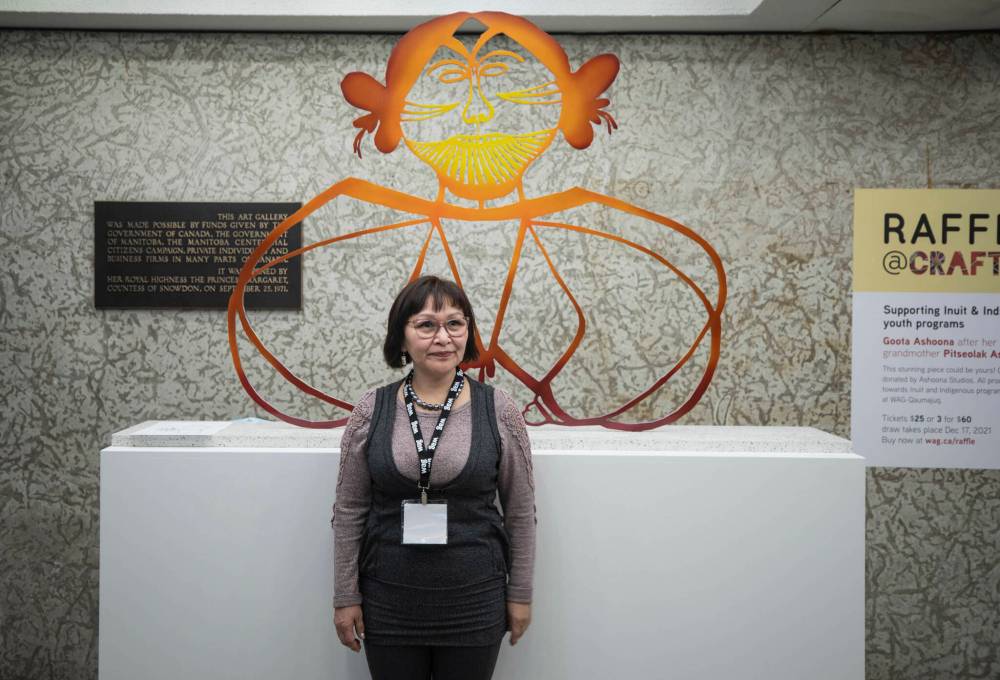
Ashoona feels at home inside Qaumajuq. Outside in downtown Winnipeg, however, Ashoona is less in her element. When she tried to visit her own statue that weekend, she tells me a few days after the sale, a man approached her and made her feel uncomfortable and scared.
Her thoughts turned to her cousin, Annie Pootoogook. In 2016, Pootoogook’s body was discovered in the Rideau River in Ottawa, and her death was considered suspicious. She was 47.
“It’s so sad,” Ashoona says. “Last time I went to see Annie when I was in Ottawa, taking care of my mom at the hospital while she was there for her cancer, just before she passed away. I thought, ‘I really got to see Annie.’ And I went to look for her and I couldn’t find her.
“I asked people on the street if they know Annie and where she lives. I found her place, little place, she was living in,” she says, so quietly she’s barely audible. When Ashoona found out about her cousin’s death, she “cried and cried.”

Inside WAG-Qaumajuq, however, Ashoona can always find her family — including Annie. Pootoogook’s coloured-pencil work, Tea Drinkers, is part of the WAG’s collection. Ashoona often carves to let things go but, in doing so, she leaves behind something tangible, something that will outlive her. The art is what’s left in the end. Pootoogook had more to say with hers. Ashoona still does.
Jocelyn Piirainen, the associate curator of Inuit art at WAG-Qaumajuq, points out that there’s also a strong familial presence in Goota’s own work. In addition to the inclusion of her mother’s face in Tuniigusiia/The Gift, Ashoona unveiled a piece for auction at Crafted: a metal-and-stone sculpture inspired by her grandmother, Pitseolak. All proceeds from the raffle will go towards Inuit and Indigenous programs for youth at WAG-Qaumajuq, something Ashoona is passionate about.
“These family connections that she’ll find to put in her work, I find that really touching,” Piirainen says. “It keeps their memory alive.” Having Ashoona in the neighbourhood, so to speak, is also a boon. “She’s eager to help out younger artists.” Teaching, of course, is another way for her legacy to live on.
“It is very nice to see my own carving out there, my artwork,” Ashoona says that morning at Qaumajuq, pointing out the window to Tuniigusiia/The Gift, where her mother’s face is bathed in pale November sunlight. “And my father’s work right in front of me, right there.”
Her father’s carvings in the vault are obviously not at the size and scale of her massive sculpture outside. But to Ashoona, they may as well be.
“They are small to look at,” she says, “but they’re really big to me.”
jen.zoratti@winnipegfreepress.com
Twitter: @JenZoratti

Jen Zoratti is a Winnipeg Free Press columnist and author of the newsletter, NEXT, a weekly look towards a post-pandemic future.


After freelancing from abroad and in Toronto for most of her career, Jessica Lee moved to Winnipeg from Toronto in 2021 to join the Free Press.
Our newsroom depends on a growing audience of readers to power our journalism. If you are not a paid reader, please consider becoming a subscriber.
Our newsroom depends on its audience of readers to power our journalism. Thank you for your support.
History
Updated on Saturday, December 4, 2021 12:07 PM CST: Adds video

